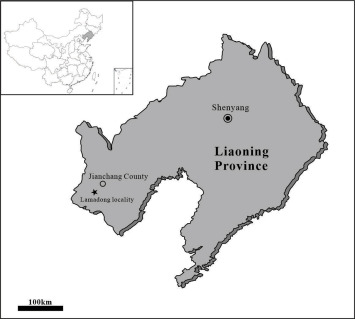Kunpengornis
- Total Dino
- Sep 25, 2024
- 3 min read
Updated: Oct 17
MEANING: Kunpeng bird
PERIOD: Early Cretaceous
CONTINENT: Asia
Kunpengornis is a euornithean bird that lived during the Early Cretaceous period in what is now China. It was discovered with fish bones preserved in the abdominal cavity, indicating that it was piscivorous.

Abstract from paper: A new euornithine bird, Kunpengornis anhuimusei gen. et sp. nov., is described based on a nearly complete skeleton from the Lower Cretaceous (Aptian) Jehol Biota in western Liaoning, China. The new taxon is characterized by possessing the unique combination of reduced maxillary ramus of premaxilla shorter than half the buccal margin of premaxilla, coracoid having a trapezoidal procoracoid process not expanded craniocaudally at its medial margin, sternum with blunt craniolateral process, drop-shaped distal end of lateral trabecula and reduced intermediate trabecula not enclosing a caudal fenestra, pubis lacking ossified distal symphysis and with gradually expanding distal end, resulting twice longer craniocaudally than at mid-shaft, but lacking an abrupt distinction between shaft and distal foot. The macerated fish bones preserved in the abdominal cavity provides direct evidence that Kunpengornis was piscivorous. Despite overall similarity with some yanornithids and other piscivorous euornithines, the phylogenetic analysis places Kunpengornis as sister taxon of Piscivoravis and closer to the "ornithuromorph-gansuid" clade than Yanornithidae, a result which supports the hypothesis that a piscivorous "Yanornis-like" bauplan was a grade along the evolutionary sequence leading to the precursors of the modern avians. The acquisition of the fish-eating ecology and the exploitation of the aquatic environments represented key innovations for the successful radiation of the euornithine birds.
Kunpengornis is from the Early Cretaceous. The Cretaceous is the third and final geological period of the Mesozoic Era, with the Early Cretaceous making up roughly the first half, lasting from about 143 to 100 million years ago. The poles were ice-free, due to the relatively warm climate, and forests extended into high latitudes. The continued breakup of the continents created new coastlines and isolated landmasses, influencing the evolution of distinct dinosaur faunas.
It was a time of transition, as many groups of animals and plants began to take on more modern forms while others declined or disappeared. Pterosaurs continued to thrive, though early birds were becoming more diverse and widespread. Mammals remained small but adapted to a variety of ecological niches. In the oceans, ichthyosaurs and plesiosaurs were common, and early mosasaurs began to appear.
Dinosaurs remained the dominant land animals, with groups like iguanodontians, spinosaurids, and carcharodontosaurids rising to prominence. While sauropods declined in some regions, they remained abundant in the Southern Hemisphere. The first true ceratopsians appeared, and ankylosaurs replaced stegosaurs in their niche. Dromaeosaurs and other small theropods diversified. During this time, the first flowering plants evolved, gradually changing global ecosystems by providing new food sources for herbivores.

Kunpengornis is a paravian. The evolution of birds began in the Jurassic Period, with the earliest birds derived from a clade of theropod dinosaurs named Paraves. The Archaeopteryx has famously been known as the first example of a bird for over a century, and this concept has been fine-tuned as better understanding of evolution has developed in recent decades.
Like other theropods, all paravians are bipedal, walking on their two hind legs. Most of the earliest groups were carnivorous, though some smaller species are known to have been omnivores. Paravians generally have long, winged forelimbs, though these have become smaller in many flightless species. The wings usually bore three large, flexible, clawed fingers in early forms. Over time, the fingers became fused and stiffened in some lineages, and the claws reduced or lost. An increasingly asymmetric wrist joint allowed the forelimbs to elongate and an elaboration of their plumage eventually allowed the evolution of flapping flight possible.
Birds, as we know them today, are the only surviving lineage of dinosaurs. As these early paravian dinosaurs continued to evolve through the Late Jurassic and into the Cretaceous, they developed lighter skeletons, improved respiratory systems, and more specialized feathers, all of which contributed to better aerial capabilities. The classic features we associate with modern birds - beaks, powerful flight muscles, and highly refined feathers - gradually emerged over millions of years. By the end of the Mesozoic, true birds had diversified into a wide range of ecological roles, from fish hunters to seed eaters. While most dinosaur lineages vanished in the Cretaceous-Paleogene extinction event, this small, feathered group managed to survive and radiate into one of the most successful vertebrate clades alive today.












